How to protect yourself in a Tsunami? If you look at the Tsunami pictures below, you will know that vehicles and buildings not only fall like pack of cards but they are swept away like twigs in water Tsunami means ‘harbor waves’ in Japanese due to the ruthless, devastating effects produced by these waves that show no sympathy for life and property. Let us look into how we can stay safe during a Tsunami in this article besides covering other important information.
The recent Sendai earthquake and Japan tsunami 2011 was for 5 minutes, a mega thrust earthquake that measured 8.9 on the Richter Scale, making it the most severe since the 8.8 earthquake off the Chile coast in 2010. It is less powerful than the utterly devastating 9.1 magnitude Earthquake in Sumatra in 2004 (Indian Ocean Tsunami), which killed more than 3, 00,000 people. At the last count, there have been 637 reported deaths and 10,000 people missing. Roads, railways have been damaged as you will see from the Japan Earthquake and Tsunami pictures below. There have been fires, an explosion in the Fakushima Nuclear Power Plant. 4.4 million families in North Eastern Japan have been left without electricity while 1.4 million people have no water. Devastating as this is and though we can do nothing but reconcile to the fact that man is helpless against the havoc of nature, we can still manage and use our intelligence to protect ourselves from Tsunami.
There is a difference between tsunamis and tidal waves, a tsunami is actually waves that come one after the other and travel at a speed that is from 500 to 600 miles per hour in the open sea. Tsunamis are not so easy to detect in the ocean and ships because the wavelengths can be hundred miles long with amplitude of just few feet. This makes the undetectable by land. As these waves come close to the sea cost, the speed reduces and the amplitude rises. Though waves are known to rise as 100 feet, even 10 to 20 feet high is enough to cause severe destruction.
Earthquake are usually the cause behind Tsunamis. Find out how to stay safe during an Earthquake. Landslides and volcanic eruptions and even meteorites are the other reasons. The area that is at the greatest risk for Tsunamis include areas that are less than 25 feet above sea level and within an area that is within one mile of the sea-shore. Apart from people and property being swept into the sea, the other risks include fire from gas lines and broken tanks, lapsing of infrastructure like fire ambulance, medical facilities and police.
Once the Tsunami starts, waves begin to move outward in all directors like we have the whirlpool ripples that are created when one throws a stone in the pool. The time between continuous wave crests can vary from 5minutes to one and a half hour. It has been seen that the first wave is no as dangerous or large as the successive ones. A strong earthquake that lasts for 20 seconds or more near the coastal area can spell a Tsunami risk. A rapid rise and fall in the coastal waters is also an indication.
The best way to notice a Tsunami wave is that they come ashore ferociously in the form of turbulent waves of water mixed with debris. They are not surf-friendly, rolling waves.
How to protect yourself in a Tsunami
Here is how you can protect yourself from Tsunami? Here are a few steps
1. Plan an evacuation route from your home, workplace, school or any place which is risk prone for Tsunami. If you are in a area close to the sea level, go to an area that is 100 feet above the sea level or go two miles inland from the coast. Go as high or far as you possibly can. You should be able to reach to a safe area by walking within 15 to 20 minutes. During the time of a disaster like earthquake or Tsunami, roads become choked, blocked and treacherous. The government or authorities should plant tsunami evacuation routes which can lead to safer areas. Contact local emergency agency for more details.
2. Find out the best way to evacuate, practice your evacuation strategy. Find out how you would be able to go to a safer zone at night or during unfriendly weather. It is better to be familiar with a route.
3. If you are someone who is visiting an area that has a risk of Tsunami, check with the hotel and local authorities about Tsunami evacuation so that you are in the know of designated escape routes in case warning is issued
4. Staying tuned for alerts is one of the best things you can do. Keep a NOAA weather report with you to keep yourself and your family informed about the local weather and other critical events. Keep it on tone alert function, this means if you are not able to hear the radio properly, the tone alert may suggest there is something happening that you have to escape from.
5. You should discuss about how you’d need to plan your route to escape with your family. Talk to them about what everyone has to do in case they are not together when disaster strikes.
How to Protect Your Property in Tsunami
Here is how you can protect your property during Tsunami
1. Avoid staying in buildings that are within several hundred feet on the ocean coastline. These areas are going to experience maximum damage from Tsunami. Also, if you are living in coastal homes, go for elevated coastal homes; usually Tsunami waves are less than 10 feet.
2. Raise electric panels, water heater, furnace and electrical appliances to the attic or higher floors to prevent damage and short circuit. Also if your water heater is on higher floors, you will be thankful to access to fresh water after the floor or Tsunami.
3. Install check valves in your building sewer traps to prevent water from coming back into home.
4. Make barriers like levees and flood walls to keep flood water in check and prevent them from entering the building
5. Seal basement walls with waterproofing compounds to prevent leakage through cracks.
6. Check with a constructional professional if there are other ways in which you can reduce damage to your property.
7. Check with your local emergency management office for more ways to prevent flood and water damage during a Tsunami.
8. Keep valuable documents and ornaments in a safe deposit box and place them in a place that is less likely to come in contact with water.
Tsunami Evacuation, Emergency Evacuation Kit
For Tsunami evacuation, you may need the following kit:
1. Battery powered portable radio or television with extra batteries
2. Flashlight
3. First aid kit
4. Extra set of car keys
5. Cash and credit card
6. Prescription/OTC medicines
7. Matches in water-proof box
8. Personal Identification Proof
9. Mobile phone
10. Special need things like formula food, diapers, prescription copies, hearing aids, spare wheel chair battery, spare eye-glasses etc.
Keep these items in a duffel bag near your door in case you need to evacuate quickly during a Tsunami, flash flood etc. This kit and its placement in your house should be known to all house members.
Here is the list of evacuation supplies kit, if you are going to be way from your home for many days. Keep an easy to carry container that has the following supplies, make sure the container is labeled properly.
1. Three gallons of water for every person
2. Three days’ supply of non-perishable food
3. One total range of clothing and footwear for each member of the family
4. Kitchen accessories like paper cups, plates, disposable utensils, household liquid bleach to treat drinking water, salt, sugar, plastic reseal-able bags, aluminum foil, utility knife
5. Blankets or sleeping bag for every family member
6. Toilet paper, hand sanitizer, liquid detergents, sanitary pads for women, shampoo, deodorants, toothbrush, medium sized plastic bucket, small shovel for digging makeshift toilet and disinfectant.
What to in case of a powerful earthquake at coastal regions
If there is an earthquake that lasts for more than 20 seconds when you are on the coast, it is a Tsunami, the first thing you need to do is
1. Drop, cover and hold on. Protect yourself first.
2. Once the shaking stops get hold of your family members and evacuate. Leave all things behind and run, because a Tsunami may be coming within minutes. Rush to a higher ground away from the coast.
3. Do not run into submerged electricity lines and keep away from buildings, bridges, street lights, trees and other heavy objects that can fall even during an aftershock.
What to do after a Tsunami
1. Keep listening to NOAA weather radio. Take a stock of the damage done, and avoid roads, bridges and routes that are unsafe.
2. Help trapped and injured people first. Call for aid. Help elderly people, infants and people with disabilities.
3. Telephone lines may be jammed; but you may be able to dial emergency calls
4. Do not be around buildings that are submerged with water. The floors may crack, the walls can give in and the buildings can sink.
5. When you enter your home or office, make sure that you exercise caution. Wear sturdy shoes, you may fear a leg cut by glass. Use a flashlight or battery powered lantern to find out the extent of damage.
6. Look out for fire hazards, there can be broken, leaking gas lines, soaked furnaces and electrical appliance s with a risk for short-circuit. Flammable explosive material is also a huge risk. Check for gas leaks, if there is a smell of gas or if you hear hissing or blowing sound, open a window and exit the building quickly. You can also try turning off the gas from the main valve if you can. Let the gas company know (you may call from a neighbor’s home) about the gas leak.
7. If there are any sparks or cut wires or smell of wire burning, then turn of the electricity rom the main fuse. If there is water in the floor where you have to get to the circuit breaker or fuse box, it is better to ask an electrician to handle this. Do not give electrical equipment for servicing till you have dried it, or let them know about the damage beforehand.
8. There is a risk of sewage line damage and toilet leaks. Call the plumber to fix the leaks of the sewage lines and the water company to check the water pipes.
9. There is a risk of animals, insects and poisonous snakes coming into the building. So use a stick to poke through the debris.
10. Drink tap water only if it is approved by the health officials that it is safe. Check food supplies, any food material that comes in contact with flood waters should be thrown out, they are unsafe.
11. Remember that homeowners insurance do not cover floods and Tsunami damage, it is better to apply for a flood insurance. Click pictures of make a video of the contents in the building and the building itself for insurance claims.
Tsunami Warning and Information
The West Coast/Alaska Tsunami Warning Center (WC/ATWC)gives tsunami warnings for California, Oregon, Washington, British Columbia, and Alaska while the The Pacific Tsunami Warning Center (PTWC) issues warnings to international authorities, Hawaii, and U. S. territories within the Pacific basin. The two Tsunami Warning Centers coordinate and disseminate the information Here is how to distinguish Tsunami warnings:
Tsunami Warning: This mean people in the warned area should evacuate as soon as possible. This mean a Tsunami has been generated.
Tsunami Watch: A Tsunami may have been generated but it is still not a ‘Warning’. Local authorities should prepare for a possible evacuation
Tsunami Advisory: This means an earthquake has occurred, which might manifest into a Tsunami. Hourly bulletins are issued letting people know about the situation.
Tsunami Information: This is a message with an information about an earthquake that may not generate a Tsunami. One bulletin is issued in this case.
Tsunami Insurance
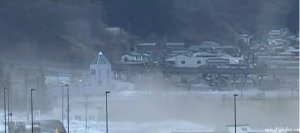 If you are thinking that your homeowners insurance or renters insurance can cover earthquakes and Tsunami, please think again. In fact, even floods and storms are not covered by homeowners insurance. For comprehensive coverage against floods and Tsunamis, you need to take Tsunami insurance, which can also be called Earthquake and Flood Insurance, which cover outside water coming to the surface level, including Tsunami.
If you are thinking that your homeowners insurance or renters insurance can cover earthquakes and Tsunami, please think again. In fact, even floods and storms are not covered by homeowners insurance. For comprehensive coverage against floods and Tsunamis, you need to take Tsunami insurance, which can also be called Earthquake and Flood Insurance, which cover outside water coming to the surface level, including Tsunami.
You can get Tsunami or Earthquake insurance as a distinct policy or in addition to your current homeowners or renters’ cover. The insurance cover will give cover only if a city or area is known to be Tsunami Ready, which means the area must have a 24 hour warning point and emergency operations unit, and more than one medium to receive warnings and alert the public, plus prepare and promote information through community education, apart from a specialized, formal Tsunami plans which include drills and emergency exercises.
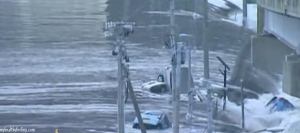
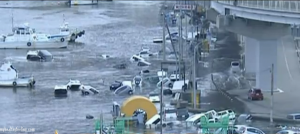
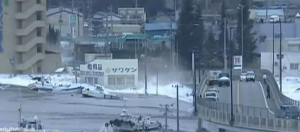
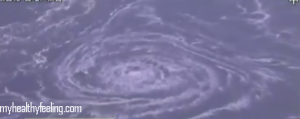
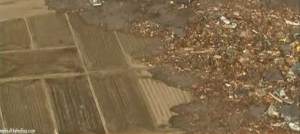
I was wondering if you’re looking to get more sales? I can get people to come to your site who have been pre-qualified specifically for your niche and are most likely to buy. See http://www.new-customers-now.xyz